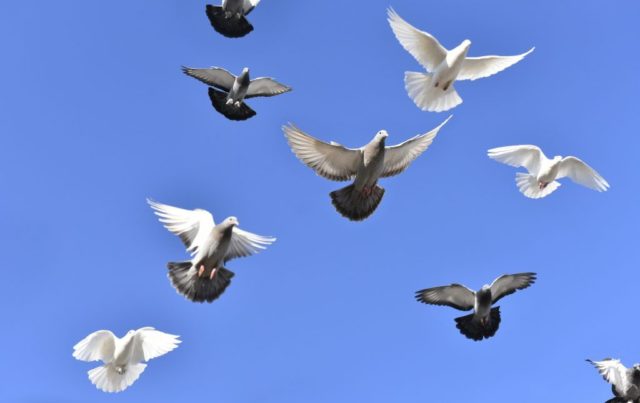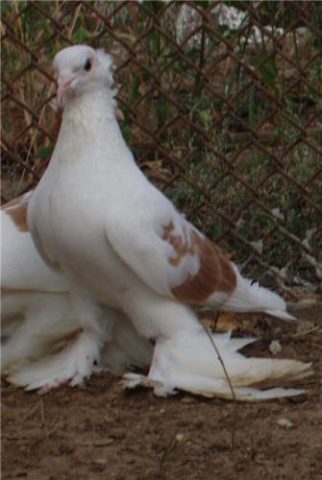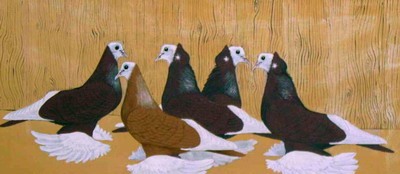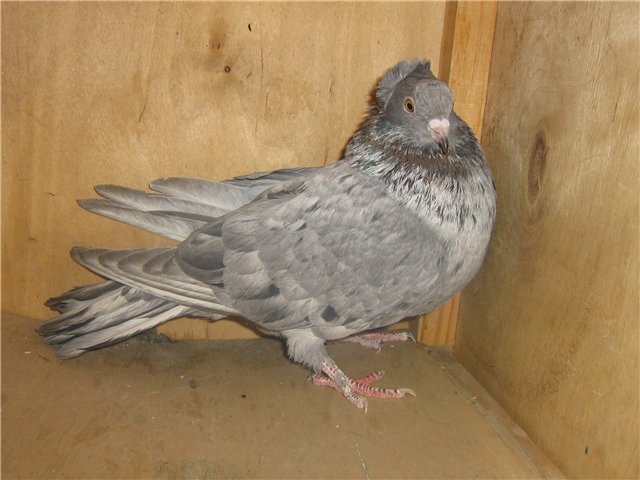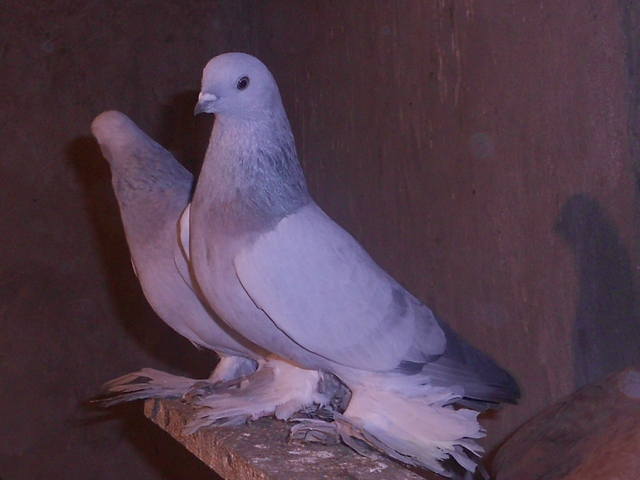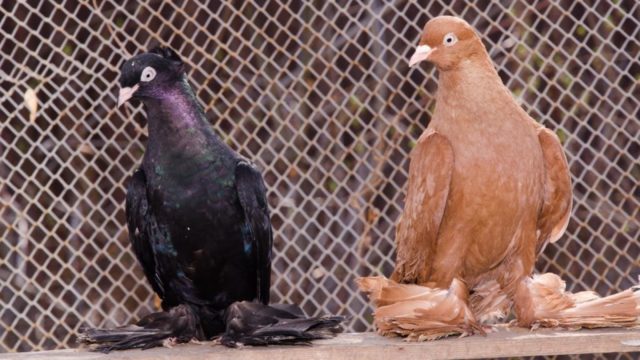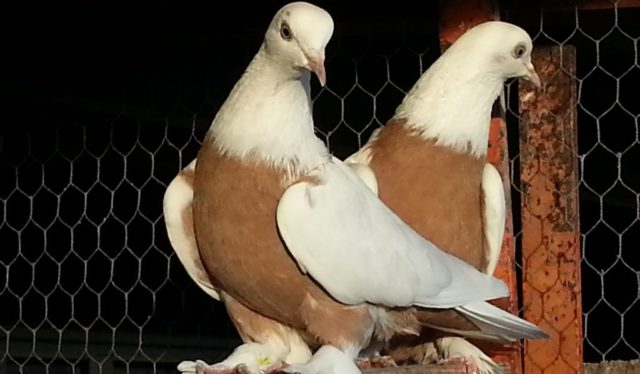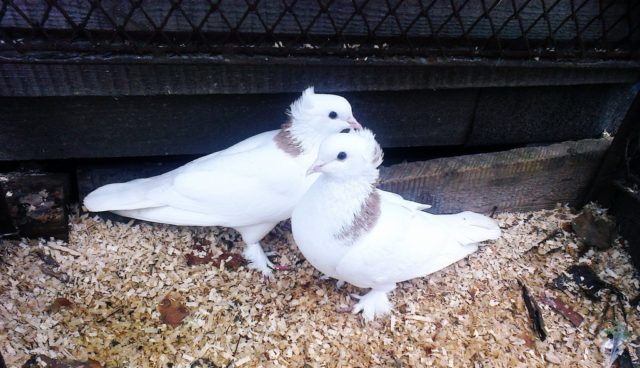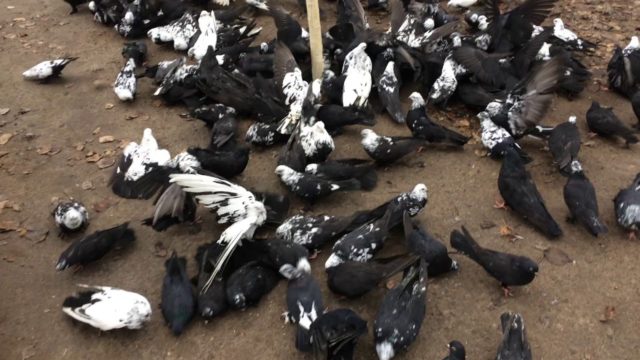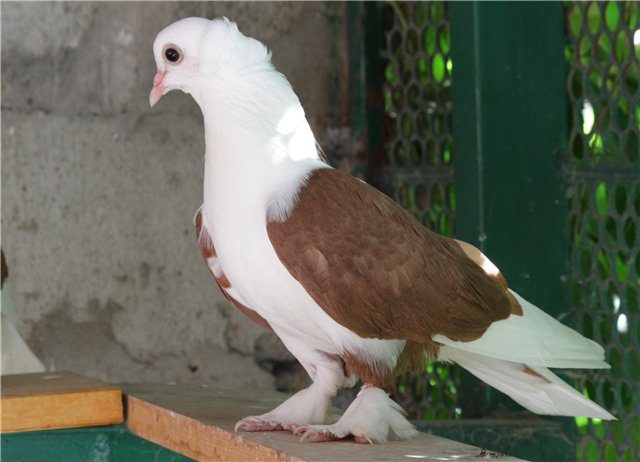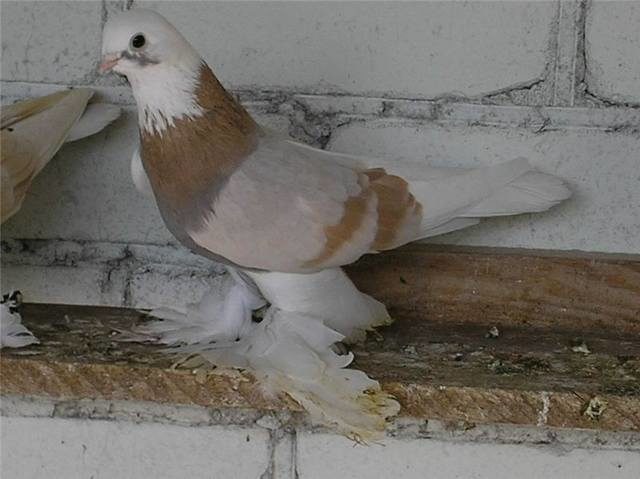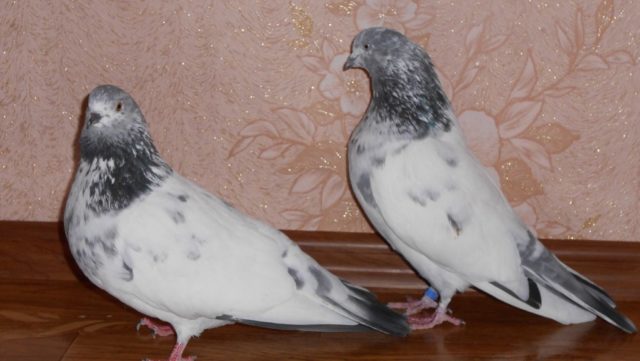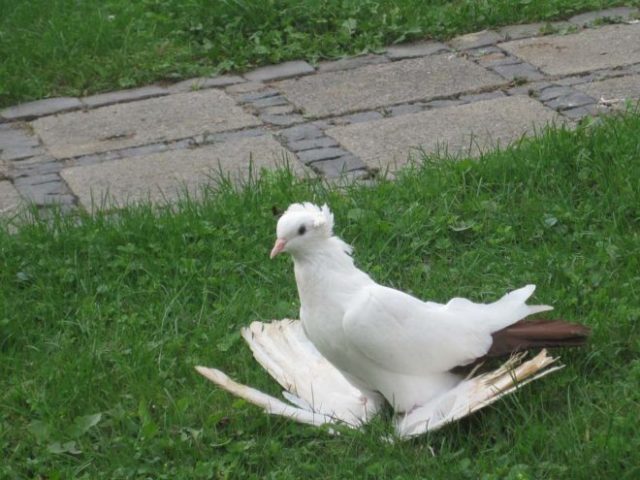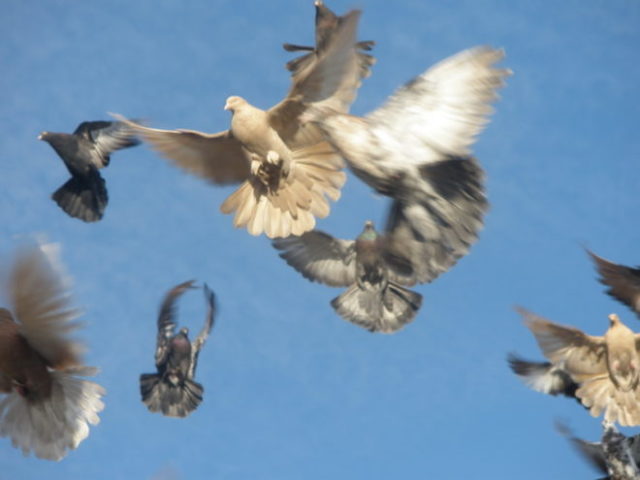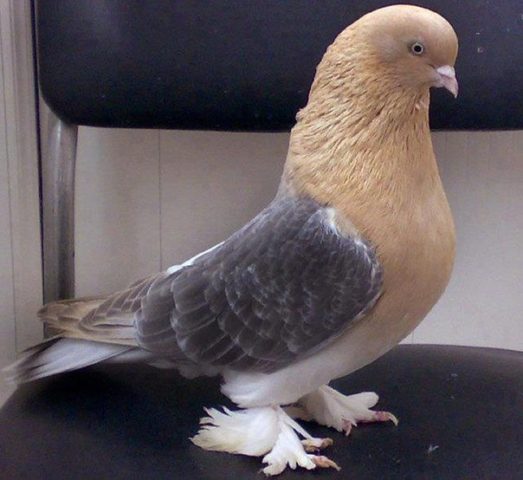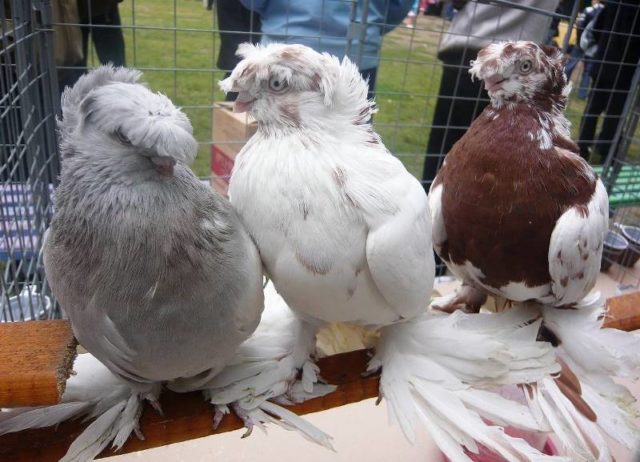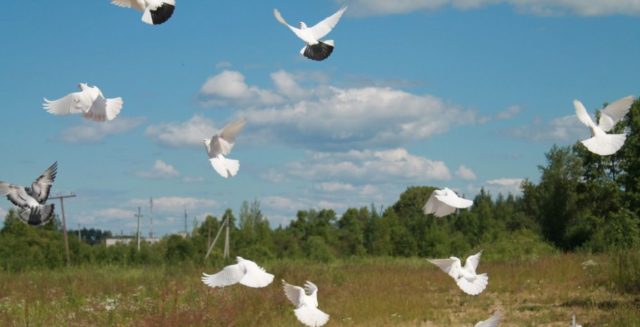Content
- 1 What does fighting pigeons mean?
- 2 Origin and features
- 3 Flying pigeons
- 4 Pigeon breeds with photos and names
- 4.1 Agasievskie fighting pigeons
- 4.2 Armavir fighting pigeons
- 4.3 Baku fighting pigeons
- 4.4 Bukhara fighting pigeons
- 4.5 Iranian slaughter pigeons
- 4.6 Krasnodar fighting pigeons
- 4.7 Leninakan fighting pigeons
- 4.8 Leushkovskie fighting pigeons
- 4.9 Maykop fighting pigeons
- 4.10 Mozdok fighting pigeons
- 4.11 Pakistani fighting pigeons
- 4.12 North Caucasian fighting pigeons
- 4.13 Central Asian fighting pigeons
- 4.14 Pillar pigeons
- 4.15 Tajik fighting pigeons
- 4.16 Turkish fighting pigeons
- 4.17 Uzbek pigeons
- 5 Keeping fighting pigeons
- 6 Training pigeons
- 7 Conclusion
Among the breeds of pigeons, there are many groups into which they are divided depending on their purpose. The most basic are flying or racing, postage or sports and decorative.
Pigeons belong to the group of racing birds, for which their flying qualities should be the most important.
What does fighting pigeons mean?
There are many rumors about the name of these birds. Many people think that these breeds are created for some kind of special fights. But a dove is a peaceful bird, and they call a fight a kind of somersault in the air, which is accompanied by a loud sound, slightly reminiscent of a clapping of hands. For all their flight characteristics and the variety of tricks performed in the air, called the game, these pigeons received such an interesting name - fighting.
Origin and features
Slaughter pigeons are a very ancient group of breeds. Presumably, the first such breeds appeared in the countries of Asia Minor several thousand years ago. Initially, the so-called battle was based on the current flight, which is characteristic of any pigeons and their common wild progenitor - the dove. Starting the current flight, the birds gain height, loudly beating their wings, and then glide, bending their wings like a boat. Some birds liked to tumble in the air, reaching some peak flight point. Games and types of flights became more and more diverse and gradually separate varieties of well-flying pigeons were formed, which cannot imagine their flight without play (somersaults) and fight (loud flaps or flaps of their wings).
The most ancient breeds of pigeons are considered, which appeared in the territories of modern Iran and Turkey.
Much later, these birds begin to breed in the Transcaucasia and the North Caucasus.
Another fairly ancient center of pigeon breeding was Central Asia. But in the XX century, many ancient breeds practically disappeared from the face of the earth. Nevertheless, in the second half of the century, an active resumption of work with flying pigeons began, and now many of the most famous and beautiful breeds find their roots in Central Asia.
These pigeons are very diverse in their appearance. Moreover, if in the past, these birds, first of all, valued their flight characteristics, now more and more attention is paid to the attractive features of their exterior. The sizes and colors of plumage can be very diverse. Many breeds are characterized by unusual feather ornaments, both on the head and on the legs and other parts of the body. But still, the most important characteristic feature that unites all pigeons of this type is the ability to fight and to play various games during flight.
Flying pigeons
The variety of types of flight of these pigeons is great. There are several of the most basic flight styles:
- Pigeons rise up, making smooth circles, and at a certain height begin to roll over their heads, simultaneously flapping their wings loudly.
- Birds are able to quickly rise into the air almost vertically, quickly flapping their wings and producing rhythmic clapping.Important! This most popular style is called pole entry.
- Often, when entering the post at a certain height, the birds perform backward somersaults and simultaneously flip their wings.
- An equally popular and beautiful style of flight is the complete hovering of birds in the air. At the same time, the tail is beautifully straightened in the form of a fan. This is followed by again smooth somersaults with the sound of a fight.
- Sometimes pigeons enter the post not quite in a straight line, but in the form of a small corkscrew, as if screwing into the air. This style of flight is called propeller flight.
- The simplest form of flight is making somersaults in the air with sound effects along a normal horizontal or angular trajectory. In some breeds, this style of flight is considered almost a marriage.
But no verbal descriptions can demonstrate the features of the flight better than a video about fighting pigeons:
There are also certain requirements to the quality of the rolls produced and the accompanying sound effects.
- Somersaults without claps are considered to be failed.
- A somersault is also considered a marriage, the angle of which exceeds or greatly does not reach 360 ° C. In this case, the game loses its perfection and beauty.
- The game is considered the best quality when the sounds of claps are heard with a clear frequency.
- And, of course, these pigeons look most beautiful when they fly with a fight and somersaults in a pair. This phenomenon can be observed during the preparation of the pair for laying or during the feeding of chicks.
On average, the flight time for fighting rocks can be from 3 to 6 hours. And some especially hardy breeds are able to play in the air for up to 8-10 hours in a row. Birds land most often in smooth movements in a circle, but sometimes they fall down like a stone, slowing down only at the very surface of the landing.
In such cases, the bird is said to be “slaughtered”. If young people have a tendency to flirt and lose orientation during the flight, then it is customary to reject them.
The sound of wings flapping can be so strong that it can sometimes be heard from hundreds of meters away.
Pigeon breeds with photos and names
Many breeds of pigeons known today are named solely for their place of origin. In general, there are several main large groups into which all known breeds are subdivided. These are the most ancient Iranian and Turkish pigeons. Numerous Central Asian breeds are also widely known, as well as North Caucasian ones, the overwhelming majority of which were bred and bred in the territory of the modern Russian Federation. Therefore, for Russia, these fighting pigeons are of the greatest interest.
Each breed differs not only in its peculiar appearance, but also in the characteristics of summer and combat.
Agasievskie fighting pigeons
This breed is one of the offshoots of the Dagestan cosmach pigeons. They are one of the southernmost representatives of the North Caucasian group. These birds are called cosmacs for their very rich plumage of legs, reaching a length of 15 cm or more. At the same time, the color of the feathers can be very diverse.
Armavir fighting pigeons
This breed belongs to the North Caucasian group, and was bred quite a long time ago, back in the 17th century. There are two types of it:
- Armavir white-headed kosmachi;
- Armavir short-billed kosmachi.
Actually, the names of the breeds already briefly contain a description of the appearance of the birds.These pigeons are characterized by a slender figure, slender beak, high seating position and beautiful plumage, shimmering in the sun.
Whiteheads have a unique plumage pattern that combines many shades. But the head is always white, and the beak is long and thin. Recently, birds of this breed with a forelock on their heads have been bred.
Both varieties of Armavir kosmachs are distinguished by good summer and exit to the pole. Only in white-headed beetles a fight occurs already in the period up to a year, and in short-billed ones - later, closer to 2-3 years.
Baku fighting pigeons
At the moment, this breed is rightly considered one of the most widespread and numerous. As the name implies, it was bred by the pigeon breeders of the capital of Azerbaijan - Baku. When breeding Baku pigeons, the least attention was paid to the external data of the birds, but they paid special attention to its flying qualities. As a result, the birds of this breed hold the record for the duration of the flight - up to 12 hours and the variety of games and fights that they can demonstrate.
The colors of the fighting Baku pigeons can be any: black, white, marble, variegated. The birds are of medium size, an oblong head, a slightly elongated body, a white thin beak, and bare or shortly pubescent legs. All of them are distinguished by high adaptation to conditions of detention, unpretentiousness, excellent parenting qualities, and most importantly - high, varied and long years.
But still, in terms of flight-fighting qualities, white wide-tailed fighting pigeons are considered the most promising. They are best at getting out into the post with coups.
Birds of this breed have ways of gaining such a significant height that they are completely hidden from view. In nature, birds do not like to keep a flock, and therefore each individual is initially characterized by its own specific flight style.
Nevertheless, over the centuries, Baku breeders have learned how to properly handle birds so much that they are able to take off in flocks by one movement of the owner and, after a beautiful game in the air, land in the right place. In addition, in terms of orientation in space and the ability to find their home hundreds of kilometers away, the birds of this breed also have no equal.
Bukhara fighting pigeons
One of the oldest breeds of pigeons in Central Asia are Bukharians. According to many versions, the popular, almost completely disappeared breed of fighting pigeons, the Kasan, originates from Bukhara. They are characterized by the most varied colors and short beaks, but most of all these birds fascinate with their beautiful play in the air.
They can easily perform almost any tricks known at the moment: go into a post more than 15 m high, do more than 10 somersaults in it, fly out with a screw, freeze like a butterfly, and much more.
Iranian slaughter pigeons
According to many sources, Iranians (or Persians) are considered the oldest breed of pigeons. They have no requirements for a specific color color. There are many varieties within the breed. But the color of the body is usually white, and the wings are most often contrasting: green, red, gray, brown, black. The design on the wings is also distinguished by its grace and originality.
Birds in general are characterized by a massive physique, hence the main features of their flight:
- tranquility and majesty;
- moderate combat;
- long duration - up to 10 hours;
- the ability to hover at high altitude for 2-3 minutes practically in real estate
- can easily move towards the wind.
The most famous varieties of the Iranian breed are as follows:
- Persians;
- Afghans;
- hamadan;
- ticklish;
- Tehran;
- Tibriz;
- heady.
An interesting variety of head-headed fighting pigeons of the Iranian breed. These birds have a round and large head up to the neck, which can be completely colored in one color or in a variety of patterns.
It was in Persia (the territory of modern Iran) that the first shaggy-legged fighting pigeons were bred. Later, they spread throughout all the surrounding countries, leading to the emergence of many breeds with long and dense plumage of legs, which are now called kosmachi.
Krasnodar fighting pigeons
The breed was bred relatively recently, but it is already very popular among pigeon breeders. Among birds, there are two main lines: one - long-billed, originates from Iran, the other, short-billed, from Turkey.
The plumage is predominantly red, yellow, white or marbled. On the legs there are short but fluffy feathers.
Birds cannot yet boast of special flying qualities, usually they rarely stay in the air for more than an hour. But the exit to the post, and the fight with somersaults are done pretty well. Breeders continue to improve the breed, but still pay more attention to the decorative characteristics of pigeons.
Leninakan fighting pigeons
The breed is also included in the group of Caucasian pigeons, but it is distinguished by a special freedom-loving character. Birds do not tolerate confined space well, so it is better not to keep them in cages.
They have excellent flying qualities. They can fly up to 8 hours without interruption. The body is small, but firmly built. The fight is very well heard even at a distance of 20 m or more. Couples form early and remain faithful for life.
Leushkovskie fighting pigeons
These pigeons are considered a variety of the Maikop breed. They have unusual plumage on their legs, therefore they are sometimes called birds with boots.
Maykop fighting pigeons
The pigeon breed, bred in the capital of Adygea, is characterized by a short beak and large size, bulging eyes. The plumage color can be either two-color or one-color. The birds are small in size with long wide wings, due to which they are excellent in the air. The flight is fast, the fight is loud and sharp, and the entry into the pole can be sudden.
Mozdok fighting pigeons
Birds of this breed slightly resemble in appearance and plumage pattern of Armavir cosmachs. The beak is shortened, the hairs are usually of medium size, rarely reaching 15 cm. The birds do not have a written standard for appearance, since the breed is quite young. But there are certain verbal agreements about how birds of this breed should look.
Pakistani fighting pigeons
Pakistani high-flying pigeons do not have outstanding decorative properties, but they are appreciated for their flight characteristics. The fight can begin to manifest itself as early as 3-4 months, but regular training is especially important. Since the birds are not able to learn to fight and somersaults on their own.
Pigeons are unpretentious in keeping. They differ mainly in light color, but with a colored pattern on the back, wings and head. The tail is very long. A feature of the breed is its varied eye color. It can be blue, black, red, or orange.
North Caucasian fighting pigeons
This is the name of a large group of pigeons, which became widespread in the North Caucasus and includes the following breeds:
- gray-pockmarked or St. George;
- armavir cosmachi;
- Molokans;
- marble;
- Dagestan;
- black, yellow and red-tailed;
- black shoulders and others.
But there is also a separate breed of North Caucasian long-billed cosmachs, which in their flight and battle are very similar to the Armavir white-headed pigeons. This is not surprising, since these two breeds are related to each other and have a common origin from Iranian pigeons.
North Caucasian kosmachi have predominantly solid color of plumage, although its shade can be different: white, gray, red, yellow. Recently, birds with variegated or distinctly colored tails have appeared. Pronounced cosmas reach 12-15 cm.The presence of a forelock on the head is not necessary. But if it is present, then, as a rule, it is wide and thick.
The flight and entry into the pole are unhurried, and during takeoff and landing, they are usually intensely kicked over with their feet, for which they received the popular name - rowers.
Central Asian fighting pigeons
It is also the name of a large group of breeds that originate from various places in Central Asia. Pigeon breeding in this region has been developing since ancient times. But in the twentieth century, for historical reasons, it was almost completely lost, and then renewed again.
Central Asian fighting pigeons have a variety of features, but there are still characteristic features that unite all birds of this breed:
- shortened and rather thick beak;
- brilliant plumage;
- relatively small size;
- large eyes of a resinous or pearl color;
- dense and varied plumage on the legs, as well as on the head.
Pillar pigeons
Pillar pigeons are not even a breed. Rather, the peculiarity of some fighting pigeons "to enter the post", that is, to abruptly, almost vertically rise upward, often flapping their wings and touching their legs. And at the very end of the flight, a series of rolls back over the head is usually performed with a simultaneous fight, that is, loud sounds resembling pops. Not all pigeons have the ability to “enter the pillar”. This feature is highly regarded among pigeon breeders.
Tajik fighting pigeons
Quite a well-known and well-defined breed, bred in Dushanbe, the capital of Tajikistan, and belonging to the Central Asian group.
The birds have an average body length, about 40 cm. The head is smooth, but a narrow or wider forelock in the back of the head is allowed. The straight white beak is also of medium size. Lokhma are small to medium. Pigeons of this breed are able to go out into a low pillar up to 5 m high. The average flight duration is 3 to 5 hours.
Turkish fighting pigeons
This is another world famous group of pigeons native to Turkey. In terms of their antiquity, they are practically not inferior to the Iranians (or Persians). Birds are characterized by small size, the presence of a forelock on the head, not too thick plumage on the legs and a wide variety of feather colors.
This group includes three main breeds:
- calabek;
- takla;
- donek.
Takla, known for their great originality in flight, are considered one of the best fighting pigeons. Entering the post, the birds make a large number of somersaults with a fight, then fall down a few meters like a stone and again rapidly rise to the same height, continuing the game.
Uzbek pigeons
One of the most famous and highly valued breeds in the modern world. It appeared relatively recently and was based on the Bukhara breed, which was crossed with Iranian and North Caucasian pigeons to obtain ideal flying qualities and large plumage of legs.
As a result, a unique breed was indeed obtained, which is famous at the same time both for its flying qualities (entering the pole, loud and rhythmic fighting) and unique decorative properties (rich plumage of the legs, the presence of two forelocks on the head). Indeed, among the Uzbek breeds there are different colors and features of plumage, but it is the two-tipped fighting pigeons that are especially popular.
In addition, about 80 different colors of plumage are known in this breed of pigeons.
Keeping fighting pigeons
In general, fighting pigeons are characterized by excellent health and live on average about 20 years. Some individuals in good conditions live up to 30-35 years.
Most often, birds are kept in aviaries, while at least 50 square meters should remain per pigeon. cm of floor 1.5 cu. m of airspace.The roosts should be level and stable, and the size of the poles should correspond to the circumference of the birds' toes. Only in these conditions will pigeons be able to fully relax after flights and tune in to the next training.
The litter should also be made from quality natural materials: peat, sand, tree bark or hay. It should be changed periodically.
Nutrition should be complete and determined, first of all, by the length of the beak. So it is best for short-billed birds to give crushed wheat, millet, as well as lentils and small peas. Long-billed pigeons are quite capable of absorbing larger types of food: corn, beans, peas, barley. The diet, especially in winter, should be supplemented with boiled potatoes, sunflower seeds, chopped vegetables. Vitamins and minerals should be present regularly: fish oil and yeast, as well as eggshells and shell rock.
By the middle of summer, pigeons usually molt. At this time, it is better to give the birds less feed containing proteins, but increase the amount of fats and oil-containing components.
Fighting pigeons need regular training, both in the warm season and in winter.
Training pigeons
You should start training pigeons of this type from 1.5-2 months of age. Moreover, it is desirable that the training be daily. The very principle of training behavior is not too complicated. The birds are simply released from the enclosure and are not allowed to sit on the roof at first for at least half an hour. The duration of the workouts is gradually increased.
For beginners, it is best to start by training birds with inconspicuous coloration and no fancy plumage. As a rule, they are much more stable in the air and show more stable results.
It is recommended to record the training of domesticated pigeons on video so that the results obtained can be compared over time.
Particularly valuable are pigeons that can start playing with a fight within the first 30 minutes of summer at intervals of two minutes.
Conclusion
Pigeons are very interesting birds, both from the point of view of external features and, of course, capable of showing the real wonders of acrobatics in the air. No wonder the hobby for pigeons usually becomes a hobby for the rest of your life.
